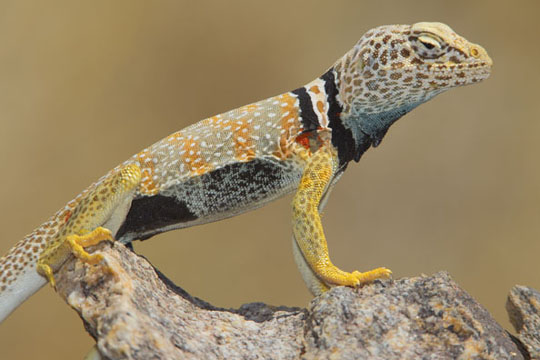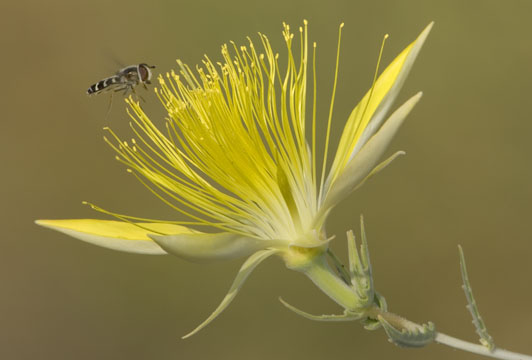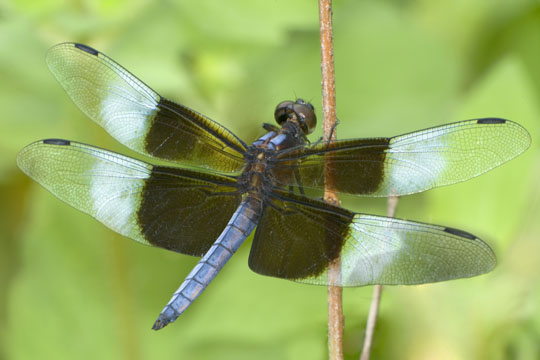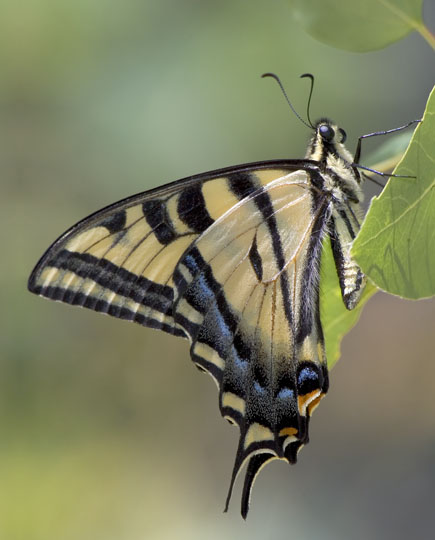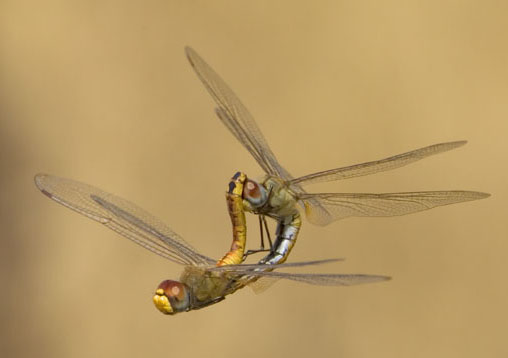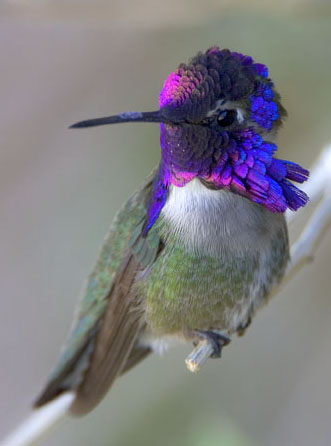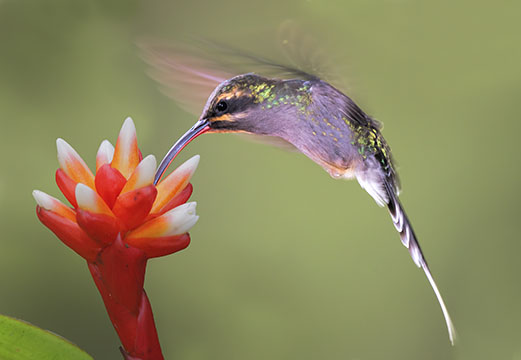 |
 |
| Telephotos as long-range macro lenses | |
|
'Long' macro lenses such as the Tamron 180 mm or Sigma 150 mm are helpful for getting tightly-framed photos of nervous animals, and for using narrow depth of field to blur the background and isolate the subject in the image. However, some species are simply too skittish or unapproachable even for a 180 mm or 200 mm macro lens. In these circumstances a 'big glass' telephoto can help, at least for moderate magnifications. They also tend to reduce background clutter to a soft, nondistracting blur and make the subject stand out clearly (as can be seen in these images). The 'catch' is that with few exceptions (such as the Canon 300 mm f4 IS), big telephotos do not have sufficient close-focus ability for tight crops of small subjects. For example, at its minimum focus distance of about 4.5 meters, the Canon 500 f4 IS achieves a reproduction ratio of 1:8.3, which is fairly typical (the new Mk. II versions of the 500 and 600 do a little bit better). The Canon 800 f5.6 IS get to about 1:7.1. This means the image is 1/7 or 1/8 life size, which is pathetic compared to the 1:1 (life-size) reproduction you get with a typical macro lens. Happily, higher magnifications with telephotos are achievable with teleconverters ('extenders' in Canon jargon) and/or extension tubes. Teleconverters by themselves do not affect the minimum focus distance, but they magnify the image (and cause a corresponding decrease in light transmission). Thus, if you use a 1.4X converter, the Canon 500/4 IS Mk. I attains a maximum reproduction ratio of 1:5.9, and the 800/5.6 IS gets to 1:5.1. That is sufficient for a tight crop on a fairly small bird, for example, but not enough for any but the very largest insects. A 2X converter improves the maximum reproduction ratio (to 1:4.2 with the 500/4 or 1:3.6 with the 800/5.6), but image quality declines somewhat and the light loss may make autofocus tricky or impossible. Autofocus may sound superfluous for macro work, but it's the only way I can get good shots of hovering dragonflies (as in some of the images at right).
Additional magnification is possible using extension tubes, either by themselves or in combination with teleconverters. Extension tubes are hollow tubes that fit between the lens and camera. They simply move the lens farther from the image plane, thereby achieving closer focus. There is a belief among some photographers that extension tubes cannot degrade image quality because 'they contain no glass'. Unfortunately, that isn't the case; many lenses are designed to function with particular optics-to-image plane distances, and their optical performance declines if they are extended. Fortunately, a big telephoto can get to useful reproduction ratios of 1:3 or 1:4 -- quite suitable for dragonflies, large butterflies, tiny birds, reasonably large flowers, etc. -- with judiciously selected combinations of moderate extension (I usually use 25 to 50 mm) and teleconverters. It's important to note that the placement of tubes and converters involves compromises:
With Canon telephotos (400/4 DO, 500/4, 800/5.6) and converters, I haven't noticed any obvious difference in optical quality between these two arrangements. In either case, depth of field is very thin and precise focus -- autofocus or manual -- is both difficult to achieve and critical for best results. 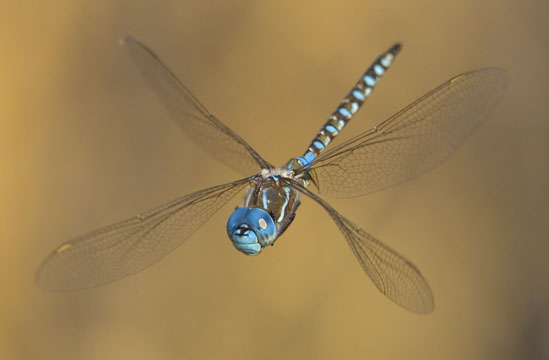
| |
